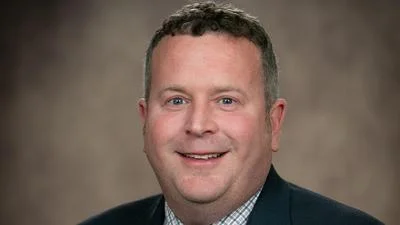Carle’s remote patient monitoring program helps care teams monitor patients without in-person visits | https://carle.org/
Carle’s remote patient monitoring program helps care teams monitor patients without in-person visits | https://carle.org/
Carle’s remote patient monitoring program helps care teams monitor patients without in-person visits
As the healthcare landscape continues to change, Carle Health is implementing a remote patient monitoring option for patients to monitor their symptoms at their convenience. This makes it easier to coordinate care.
The program uses phone calls and text messages to send patients questions about their health and symptoms. Patients can then respond with updates about what they experience from their homes. Their care team can use these reports to track their patients' health without the need for an in-person visit.
“The goal is to track and trend patient data to get ahead of emergency situations,” Frank Barber, Manager of Outpatient Care Coordination, said. “When we can track symptoms, we catch things more quickly and contact the patient to assess their health situation. We can avoid an emergency department (ED) visit, which benefits the patients and our healthcare system.”
This program is currently only available by invitation to qualifying patients with chronic conditions such as hypertension, congestive heart failure (CHF) and chronic obstructive pulmonary disease (COPD), or to patients with an emergency department or hospital discharge from most Carle Health system hospitals.
“This is a more proactive approach to healthcare rather than a reactive approach,” Allison Kasper, Patient Access Coordinator, said. “We’re expanding how we communicate to use the methods the patients prefer, like calling and texting.”
“What’s great is that this is a device-less program,” said Barber. “You don’t have to have a smart phone to participate. When enrolled, an engagement specialist will reach out to better explain the program and how the patient should respond to the questions. Like how to answer questions on a numeric scale, such as ‘How is your cough? One for good, two for worse’.”
As of December 2022, the data gathered from patients through the program is automatically added to the patient’s Epic chart.
This record will be accessible to the patient’s care team so they can track and follow the patient’s health condition and track changes. The self-reported data will remain separate from clinical data added by the patient’s care team.
Any response that falls outside of a normal range for a patient will prompt a call from one member of the nursing team who manage communications.
“A dedicated nurse with the remote patient monitoring team will reach out to address the patient’s situation,” Kasper said. “That nurse will then reach out to a member of the patient’s care team to determine how to best follow up with that patient.”
“Patients receive specific questions about their condition and what they’re experiencing,” Barber said. “Patients discharged from the hospital or emergency department enter the program for 30 days to check in with them about their condition or medication.”
Patients can stay in the program for as long as they choose to continue reporting on their conditions. If they leave the program, then feel that it would be important to continue reporting on their health, they can request to re-enter the program through their primary care provider.
“Patients can also report issues or symptoms that aren't resolved yet,” Kasper said.
Based on the success of the program, discussions about the expansion of the program to cover all primary care and more chronic conditions in 2023 have begun.
“As we’ve seen, the program is successful and cost saving,” Barber said. “Through this new communication, we can avoid patients going to the ED unnecessarily.”
Original source can be found here





 Alerts Sign-up
Alerts Sign-up